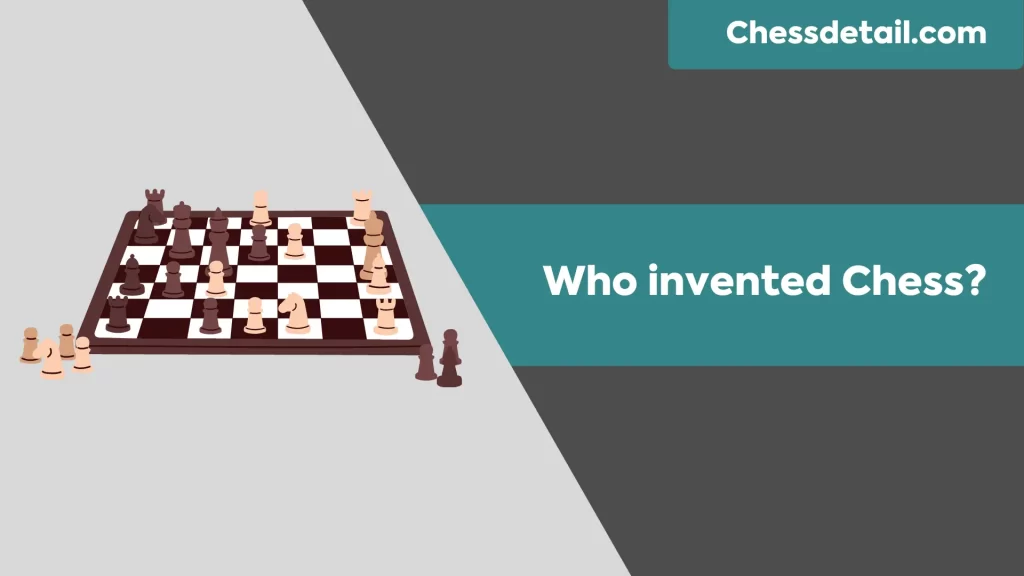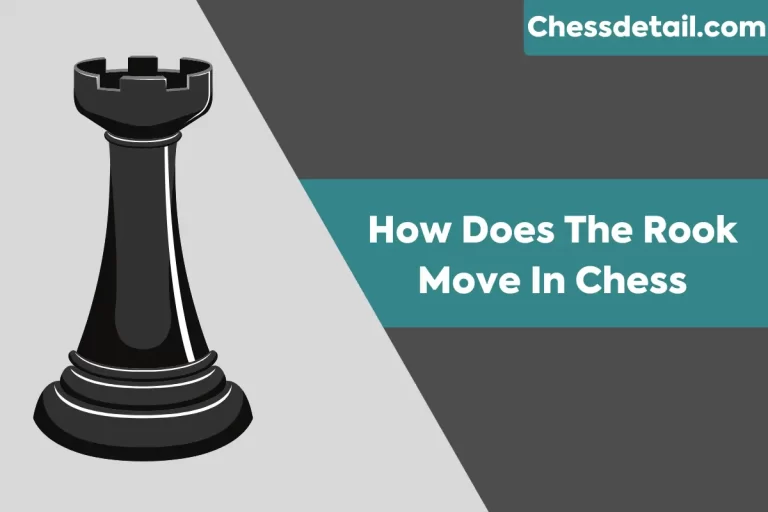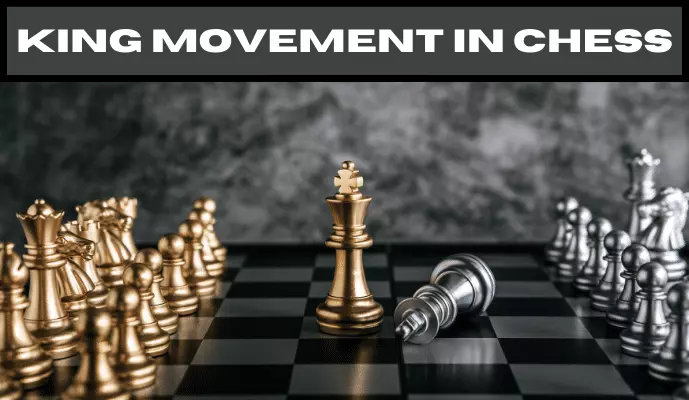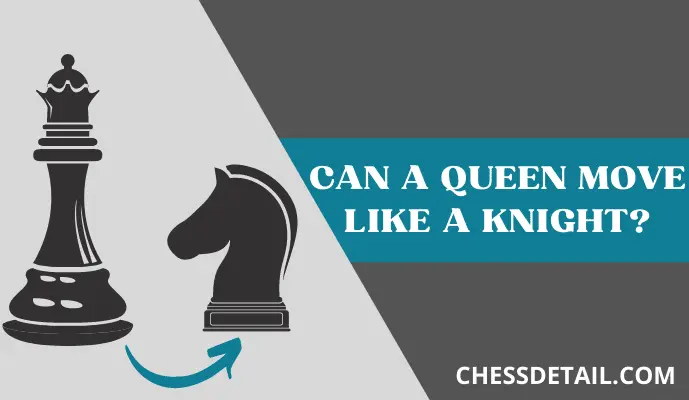Who Invented Chess? Let’s Uncover Origins of this Game
Chess is a game that many people enjoy all around the world. But have you ever wondered who invented chess? Figuring out where chess came from is like solving a tough puzzle. This game has a long history that goes back over a thousand years. It didn’t just show up overnight. Instead, it evolved over time, changing as it moved from one country to another. In this article, we will take you on a journey through time and places to discover the origins of chess. We’ll look at ancient games, famous players, and how chess became the game we know today.

Who Invented Chess?
The precise origins of chess are not definitively known, but it is generally believed to have originated in India during the Gupta Empire, around the 6th century AD. The game was initially called “chaturanga,” which translates to “four divisions of the military” in Sanskrit.
The Ancient Roots of Chess in India: Chaturanga
The Game Chaturanga and Its Basics
Long before the game of chess that we know today, there was an ancient game called Chaturanga in India. This game is like the great grandparent of modern chess. In Chaturanga, you had different pieces like soldiers, horses, elephants, and chariots, which were moved around a board. These pieces later changed into the pawns, knights, bishops, and rooks that we see in today’s chess games. Just like in chess, the goal was to protect your king while trying to checkmate the opponent’s king.
The Historical Context of Chaturanga
So why was Chaturanga made in the first place? Well, it was created to mimic battles and wars in ancient India. The pieces represented different parts of an army. In those times, games weren’t just for fun; they were also a way to practice thinking strategically. Leaders and soldiers could play Chaturanga to get better at planning battles.
How Chaturanga Traveled Abroad
But how did this ancient Indian game spread to other countries? The answer is the Silk Road. The Silk Road was a big network of trade routes that connected India with other places like Persia. Traders didn’t just carry goods like silk and spices; they also shared ideas and culture, including games like Chaturanga. So, when traders from India went to Persia, they took Chaturanga with them. In Persia, the game got a new name, Shatranj, and some new rules too.
Persian Contributions: Shatranj
Transformation from Chaturanga to Shatranj
When the game of Chaturanga traveled from India to Persia, it got a makeover and a new name: Shatranj. Imagine it like a movie getting a sequel with new characters and twists. In Shatranj, the pieces changed a little. For example, the elephants became viziers, which we know today as bishops. The rules got some updates too, but the main idea of the game stayed the same: protecting your king while trying to get the other king into checkmate.
Shatranj’s Impact on the Islamic World
After Shatranj was born in Persia, it became super popular, kind of like a hit song that everyone wants to listen to. It spread across the Islamic empire, from Spain to Africa and all the way to the Middle East. People loved it because it made them think hard and be strategic, just like Chaturanga did in India. Kings, scholars, and everyday folks played it. They even started writing books and guides on how to play Shatranj better.
Early Documented Games of Shatranj
You might be wondering, how do we know all this stuff about a game that’s so old? Well, people back then liked the game so much that they wrote about it. There are ancient books and documents that talk about the rules of Shatranj, famous matches, and even puzzles using Shatranj pieces. These old writings are like a treasure map that helps us understand how the game evolved into the chess we know today.
Chess Finds Its Way to Europe
Arrival Through Islamic Spain and Eastern Europe
Imagine chess as a world traveler on a big adventure. After being popular in places like India and Persia, chess packed its bags and went to Europe. How did it get there? Well, one way was through Spain. You see, Spain was a part of the Islamic empire for a while, and they learned the game of Shatranj from them. Another way chess entered Europe was from the east, coming through countries like Russia. So, it’s like the game took different roads to arrive at the same exciting destination: Europe!
Variants of Chess in Medieval Europe
Once chess got to Europe, it didn’t stay the same; it got some fun makeovers! Just like you might change your outfit for a special event, chess changed its “look” to fit in with new cultures. For example, in Germany, they had a version called Courier Chess. This game was a little different but still kept the main ideas of chess. It was like a cousin to the chess we know today, with extra pieces and a bigger board.
Standardization in Europe
Okay, so chess was popular, and lots of people were playing different versions of it. But there was a problem. Imagine trying to play a game where everyone has different rules. Confusing, right? That’s why some smart people decided to write rulebooks and guides about how to play chess. These books helped make sure everyone was playing the same game, following the same rules. This is what we call “standardization.”
Modern Chess and Its Transformation
The Game Changing Rules in the 15th Century
Have you ever had a favorite toy that got a cool upgrade? Well, that’s what happened to chess in the 15th century. The game got some big changes, especially with how the pieces moved. The biggest change was with the Queen. Before, the Queen could only move one square at a time, but after the upgrade, she became super powerful. She could now move as far as she wanted in any direction! These changes made the game faster and more exciting to play.
The Influence of Chess Masters
Just like we have sports heroes today, chess also has its superstars. People like Wilhelm Steinitz and Bobby Fischer did some amazing things on the chessboard. They came up with smart strategies and tricks that many people still use today. Steinitz was the first official World Chess Champion, and Fischer was a genius from America who beat the best players from other countries. Because of them, the way we play and think about chess has changed a lot.
Chess in the Age of Technology
We live in a world full of gadgets, right? Computers, smartphones, and even smartwatches. Well, guess what? Chess has gone high-tech too! Computers and special chess programs help people get better at the game. Some computers are so smart, they can even beat the best human players! This techy twist on chess helps everyone learn faster and adds a whole new layer of fun.
FIDE and the World of Competitive Chess
Formation and Role of FIDE
Imagine having a club at school where everyone makes up their own rules for a game. Confusing, right? Well, FIDE is like the big club that makes sure everyone follows the same rules in chess. FIDE stands for “Fédération Internationale des Échecs” or “International Chess Federation” in English. It was formed in 1924 and helps organize important chess events around the world. They make the official rules and make sure every country plays the same way. This keeps the game fair and fun for everyone.
Legendary Chess Tournaments and Championships
Just like we have the Super Bowl for football and the World Series for baseball, chess has its big time events too. One of the biggest is the World Chess Championship. This is like the Olympics of chess. The best players from all around the world come to compete. Winning this championship is a huge deal and shows that you are the best of the best. These events are watched by millions of people and make chess really exciting.
Current Chess Grandmasters and their Influence
In the world of chess, a “Grandmaster” is like a superstar athlete. These are the players who are really, really good at chess. One of the most famous Grandmasters right now is Magnus Carlsen. He’s from Norway and has been a World Chess Champion many times. He has a way of making really smart moves that surprise his opponents. Many people watch his games to learn new strategies and get better at chess themselves.
Cultural Impact of Chess
Chess in Literature and Media
You know how everyone talks about a movie or book that becomes super popular? Well, chess has had its moments of fame in books and movies too. For example, there’s a book and a movie called “Harry Potter and the Philosopher’s Stone” where Harry and his friends play a life sized chess game to save the day. There’s also a show called “The Queen’s Gambit” that got lots of people excited about chess. It’s about a girl who becomes a chess champion. Because of stories like these, more people are learning and talking about chess.
Chess as an Educational Tool
Have you ever heard a teacher say that playing games can make you smarter? It sounds too good to be true, but with chess, it’s actually true! Many schools now have chess clubs and even classes. Why? Because playing chess can make you better at problem solving and thinking ahead. It’s like a workout for your brain. Teachers and parents like it because it’s a fun way to learn important skills that you’ll use in school and in life.
Conclusion:
Chess has a long and interesting history that started in ancient India and traveled all over the world. People from different places added their own ideas, making it the game we love today. Chess is not just old; it’s timeless. It teaches us to think, plan, and even helps us in school. With champions like Magnus Carlsen and the use of computers, chess keeps changing and growing. Who knows what chess will look like in the future, but one thing is sure: it’s here to stay.






